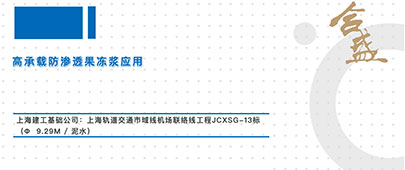
Application of high load-bearing and anti-seepage jelly slurry
During the shield tunneling process of the JCXSG-13 section of the airport connecting line, it is necessary to cross the Pudong Airport flight area for a long distance, including the airport taxiway, satellite hall high pole lighthouse, satellite hall, airport rapid transit tunnel (shield section), overhead pipeline support and many other buildings (structures). The shield tunneling is carried out for about 1900 meters in the ⑦ 2 full section sand layer, with a "V" shaped slope and a tunnel top burial depth of 12.11 meters to 51.00 meters, which is currently the deepest shield tunneling section in Shanghai. By using high load-bearing and anti-seepage jelly slurry (hereinafter referred to as jelly slurry), the frictional resistance between the shield shell and the soil is reduced, and the jelly slurry effectively fills the gap between the shield shell and the soil to play a bearing role and prevent ground settlement.
01 Project Overview
The JCXSG-13 section of the airport connecting line project is located in Zhuqiao Town, Pudong New Area. The total length of the section is about 5.7 kilometers, including the Pudong Airport working well, the pier replacement of the south turning ramp, the section tunnel, and related ancillary works. Among them, the section from Pudong Terminal 1 and Terminal 2 Station to Pudong Terminal 3 Station has a left line length of about 436.5+2598.3 meters and a right line length of about 436.3+2597.2 meters.
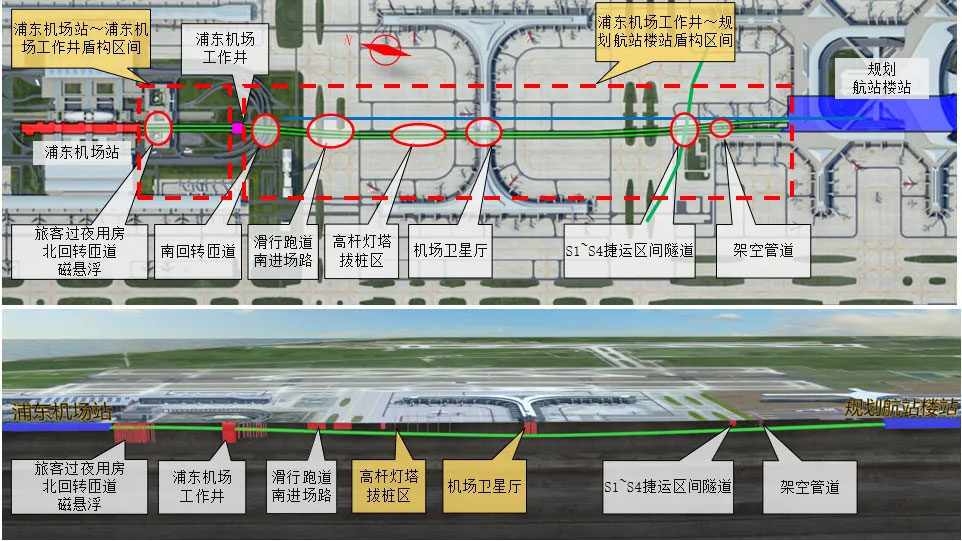
Difficulties
Difficulty 1): Crossing the entire cross-section of the ⑦₂ sand layer, the tunnel forms a "V" shaped slope, and the top of the tunnel is buried at a depth of 12.11 to 51.00 meters< br /> Difficulty 2): The middle section shield machine advances the entire section of the sandy soil layer, which has strong fluidity and is rich in pressurized water< br /> Difficulty 3): Underpass the airport runway, satellite hall, high pole lighthouse pile pulling area, S1-S4 metro tunnels at Pudong Airport, and overhead pipelines.
02 Use of high load-bearing and anti-seepage jelly slurry
By injecting jelly slurry into the gap formed between the shield shell and the soil, the frictional resistance outside the shield shell is reduced and the accumulation of sand and soil outside the shield shell is prevented, thereby solving the problems of excessive thrust during shield tunneling and difficult re pushing after shutdown.
03 Progress in Data Changes
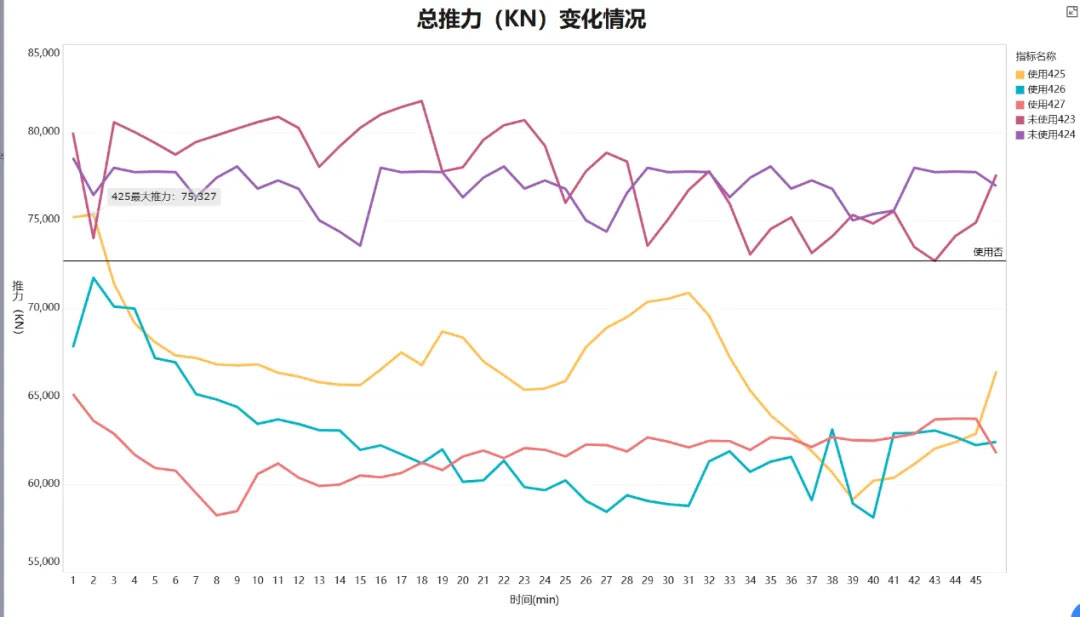
1. Changes in thrust before and after using jelly slurry:
Left line 423 and 424 rings are not used, and jelly slurry has been used for ring 425

After the left line shield machine advanced to the full section sand layer, the shield machine advanced normally, but the total thrust of the shield machine was higher than that of the same buried depth layer. After analyzing the change curve of the total thrust of the shield machine in the 423 and 424 rings within 45 minutes from the start of the shield machine, the average total thrust of these two rings was 78000kn.
Starting from ring 425, inject high load-bearing and anti-seepage jelly slurry through the reserved holes in the middle shield, and conduct statistical analysis on 425, 426, and 427& nbsp; The variation curve of the total thrust force within 45 minutes from the start of shield tunneling shows that the average total thrust of these three rings is 62100kn, and the total thrust of the shield tunnel decreases by 20.3% before and after use.
2. Continuous use of jelly slurry shield machine
Thrust situation during propulsion: After continuous use of jelly slurry, the shield tunneling parameters remain stable 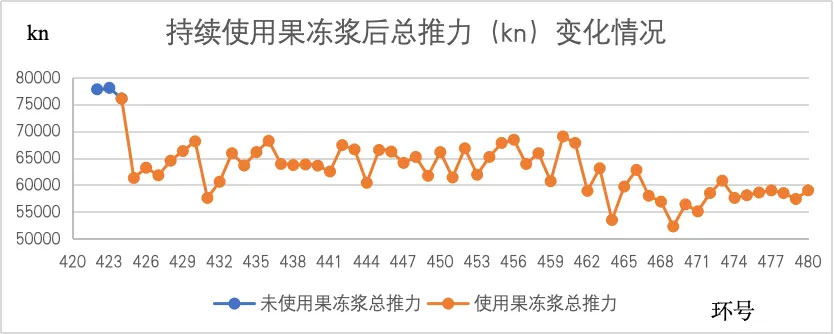
Statistics were conducted on the changes in total thrust of the shield tunneling machine during the process of advancing 58 rings from ring 422 to ring 480. Starting from ring 425, jelly slurry was used. Through the chart, it can be observed that the total thrust of the shield tunneling machine before and after using jelly slurry increased from 78000kn, and gradually stabilized at around 60000kn after using jelly slurry. The total thrust fluctuated slightly up and down, and the use of jelly slurry can reduce the frictional resistance between the shield shell and the soil.
Inject jelly slurry during the restart of 3 shutdowns
Changes in shield tunneling thrust before and after advancement:
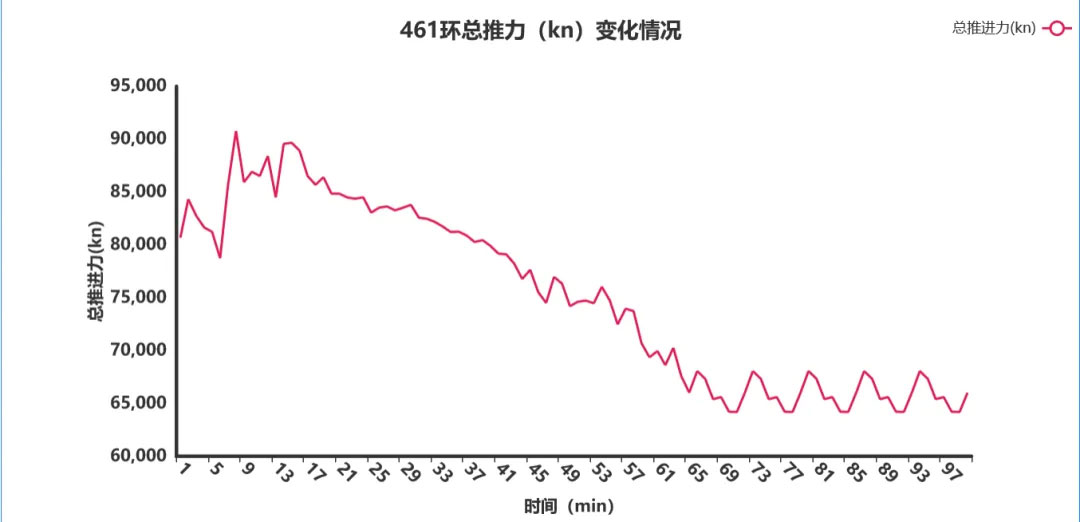
The machine was stopped using jelly slurry, and after re pushing, the thrust decreased significantly. Before the shield machine advanced 461 rings, the slurry equipment needed to be connected to a relay pump, and the shield machine stopped. During re pushing, the thrust exceeded the warning value, causing the cutterhead torque to be controllable. However, due to the surge in thrust, the shield machine could not excavate normally. The project expert meeting speculated that the shield machine was shut down for a long time, and under the influence of groundwater infiltration, the sand geology gradually tightly wrapped the middle shield and tail shield of the shield machine, causing the shield machine to be trapped in the silty sand formation, requiring shield body rescue operations& nbsp; At this time, the project adopts the jelly slurry process, using a specially designed high-pressure plunger pump to inject about 1.2m ³ of jelly slurry from the reserved radial grouting hole in the middle shield shell, and then re advance. The shield tunneling gradually returns to normal. When the excavation mileage exceeds 600mm, it takes about an hour for the shield to basically escape, and the total thrust remains stable at around 65000 kn.
Summary |& nbsp;SUMMARIZE
The large-diameter mud water shield tunneling passes through a full section sand layer and uses the high bearing anti settlement jelly slurry construction method. The application case in the shield construction section proves that the thrust and torque of the shield machine have a decreasing trend. During the shutdown and re pushing period, it effectively helps the machine body to escape, and the cutterhead torque is also maintained within a reasonable range. This proves that the high bearing anti settlement jelly slurry has significant lubrication and drag reduction effects after wrapping the outer periphery of the shield body, reducing the direct contact friction between the shield body and the soil, and quickly filling the gap between the shield shell and the formation to prevent ground settlement and stabilize the formation.
